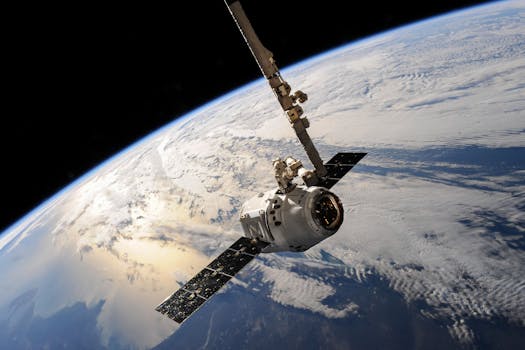The Future of Satellites: Revolutionizing Global Connectivity
The future of satellites is poised to revolutionize global connectivity, enabling faster and more reliable communication services. With advancements in space technology, satellites are becoming increasingly important for various applications, including navigation, remote sensing, and communication.

The Future of Satellites: Revolutionizing Global Connectivity
The future of satellites is poised to revolutionize global connectivity, enabling faster and more reliable communication services. With advancements in space technology, satellites are becoming increasingly important for various applications, including navigation, remote sensing, and communication. Satellites have been a crucial part of modern life, providing services such as GPS, weather forecasting, and television broadcasting. However, the next generation of satellites is expected to play an even more significant role in shaping the future of global connectivity.
Advancements in Space Technology
Recent advancements in space technology have made it possible to launch smaller, more efficient, and cost-effective satellites. This has led to an increase in the number of satellite launches, with many private companies, such as SpaceX and OneWeb, launching constellations of satellites to provide global internet connectivity. These satellites are designed to provide high-speed internet services to remote and underserved areas, bridging the digital divide and enabling access to information and communication services.
The development of new satellite technologies, such as phased arrays and digital payloads, has also improved the performance and flexibility of satellites. Phased arrays allow satellites to steer beams electronically, enabling them to provide more targeted and efficient communication services. Digital payloads, on the other hand, enable satellites to process and transmit data more efficiently, reducing latency and improving overall system performance.
Applications of Satellites
Satellites have a wide range of applications, including navigation, remote sensing, and communication. Navigation satellites, such as GPS, provide location information and timing signals, enabling applications such as mapping, tracking, and precision agriculture. Remote sensing satellites, such as Landsat and MODIS, provide valuable data on the environment, climate, and natural resources, enabling applications such as crop monitoring, disaster response, and climate modeling.
Communication satellites, such as geostationary satellites and low-Earth orbit (LEO) satellites, provide a range of communication services, including television broadcasting, telephony, and internet connectivity. These satellites enable global communication, connecting people and businesses across the world and facilitating international trade, commerce, and diplomacy.
In addition to these traditional applications, satellites are also being used for new and innovative purposes, such as space-based earth observation, satellite-based navigation, and satellite-based communication networks. For example, satellite-based earth observation is being used to monitor the environment, track climate change, and predict natural disasters. Satellite-based navigation is being used to provide more accurate and reliable location information, enabling applications such as autonomous vehicles and smart cities.
Challenges and Opportunities
Despite the many advancements and applications of satellites, there are still several challenges and opportunities that need to be addressed. One of the major challenges facing the satellite industry is the growing problem of space debris. As more satellites are launched into space, the risk of collisions and debris increases, posing a threat to the safety and sustainability of space operations.
Another challenge facing the satellite industry is the need for more efficient and sustainable launch systems. Traditional launch systems are expensive and environmentally unsustainable, and new technologies, such as reusable rockets and air-breathing engines, are needed to reduce the cost and environmental impact of launching satellites into space.
Despite these challenges, the future of satellites is full of opportunities. The growing demand for global connectivity and the increasing importance of space technology are driving innovation and investment in the satellite industry. New technologies, such as satellite-based internet of things (IoT) and satellite-based 5G networks, are being developed to provide more efficient and reliable communication services. The use of satellites for earth observation, navigation, and communication is also expected to increase, enabling new applications and services that will transform industries and improve lives.
Conclusion
In conclusion, the future of satellites is poised to revolutionize global connectivity, enabling faster and more reliable communication services. With advancements in space technology, satellites are becoming increasingly important for various applications, including navigation, remote sensing, and communication. While there are challenges and opportunities that need to be addressed, the growing demand for global connectivity and the increasing importance of space technology are driving innovation and investment in the satellite industry. As the satellite industry continues to evolve, we can expect to see new and innovative applications of satellites that will transform industries and improve lives.






